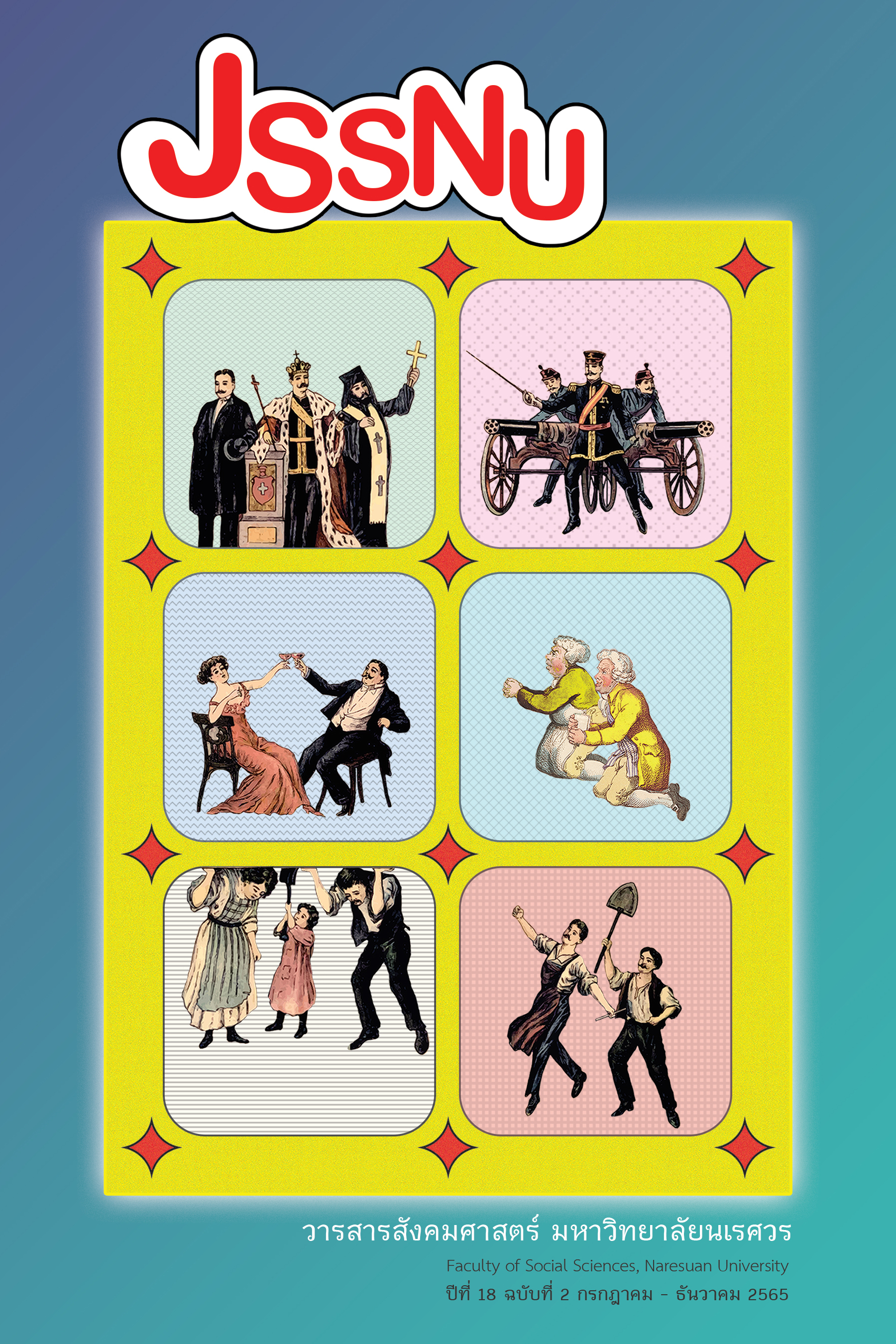Ghost, Woman, Ethnicity: The Politics of Possession in the Film, Ta-Kien
Main Article Content
Abstract
The Film, Ta-Kien (2003) narrated the construction of a big dam from 1977 to 1997, which affected the Karen ethnic group. The director presented this historical film from the perspectives and attitudes of the ethnic group and their experiences of serious injustice. The film used the supernatural power-possessed woman, Pee Nang Ta Kien, to demonstrate and criticize state power. This movie demonstrated 3 strategies in which people of low status interact with the state power in being spiritually possessed as a means for communication, guarantee, and influence. Furthermore, the analysis of the film and the concept of being possessed in the historical context reveals the Thai state's attitude toward the Karen people as ghosts in the Thai geo-body.
Downloads
Article Details

This work is licensed under a Creative Commons Attribution-NonCommercial-NoDerivatives 4.0 International License.
References
Bargen, D. G. (1997). A woman’s weapon: Spirit possession in the tale of Genji. Honolulu: University of Hawaii Press.
Beneduce, R., & Taliani, S. (2006). Embodied powers, deconstructed bodies spirit possession, sickness, and the search for wealth of igerian immigrant women. Anthropos, 101(H.2), 429-449.
Bourguignon, E. (1976). Possession. San Fancisco: Chandler & Sharp.
Bourguignon, E. (2004a). Suffering and healing, subordination and power: Women and possession trance. Ethos, 32(4), 557-574.
Bourguignon, E. (2004b). Possession and trance. In C. R. Ember, & M. Ember (Eds), Encyclopedia of medical anthropology: Health and Illness in the world’s cultures topics-volume 1; cultures-volume 2 (pp. 137-145). US: Springer.
Bourguignon, E., & Pettay, L. (n.d.). Spirit possession, trance and cross-cultural research. Retrieved July 9, 2020, from http://www.paulbourguignon.com/writing/Publications/1964%20-%20Spirit%20Possession,%20Trance%20and%20Cross-Cultural%20Research.pdf
Charoensin-o-larn, C. (1999). Development discourse: Power, knowledge, truth, identity and the otherness. Bangkok: Vibhasa. [in Thai].
Cohen, E. (2008). What is spirit possession? defining, comparing, and explaining two possession forms. Ethnos, 73(1), 1-25.
Giordan, G., & Possamai, A. (2016). The over-policing of the devil: A sociology of exorcism. Social Compass, 63(4), 444-460.
Kraipakorn, D. (2005). Dam and conflict: Social movement and natural resource management, case studies of the movement against the construction of the dam, Namjone in Kanchanaburi between the 1982s-1988s. Bangkok: Princess Maha Chakri Sirindhorn Anthropology Centre. [in Thai].
Lambek, M. (1980). Spirits and spouses: Possession as a system of communication among the Malagasy speakers of Mayotte. American Ethnologist, 7(2), 318-331.
Lewis, I. M. (1971). Ecstatic religion: A study of shamanism and spirit possession. New York: Routledge.
Luangaramsri, P. (2000). Redefining nature: Karen ecological knowledge and the challenge to the modern conservation paradigm (Doctoral dissertation). Washington: University of Washington.
Sluhovsky, M. (2007). Believe not every spirit possession, mysticism and discerment in early modern catholicsm. Chicago: University of Chicago Press.
Sharabi, A. (2020). The politics of madness and spirit possession in northern India. Medical Anthropology, 40(2), 1-14.
Turner, V. (1972) [1967]. Betwixt and between: The liminal period in rites de passage. In W. A Lessa, & E. Z. Vogt (Eds.), Reader in Comparative religion: An anthropological approach (3rd ed) (pp. 338-342). New York: Harper & Row.
Turner, V. (1991). The ritual process: Structure and anti-structure (7th ed). New York: Cornell University Press.
Yuval-Davis, N. (2003). Nationalist projects and gender relations. Nar. Umjet, 40(1), 9-36.


